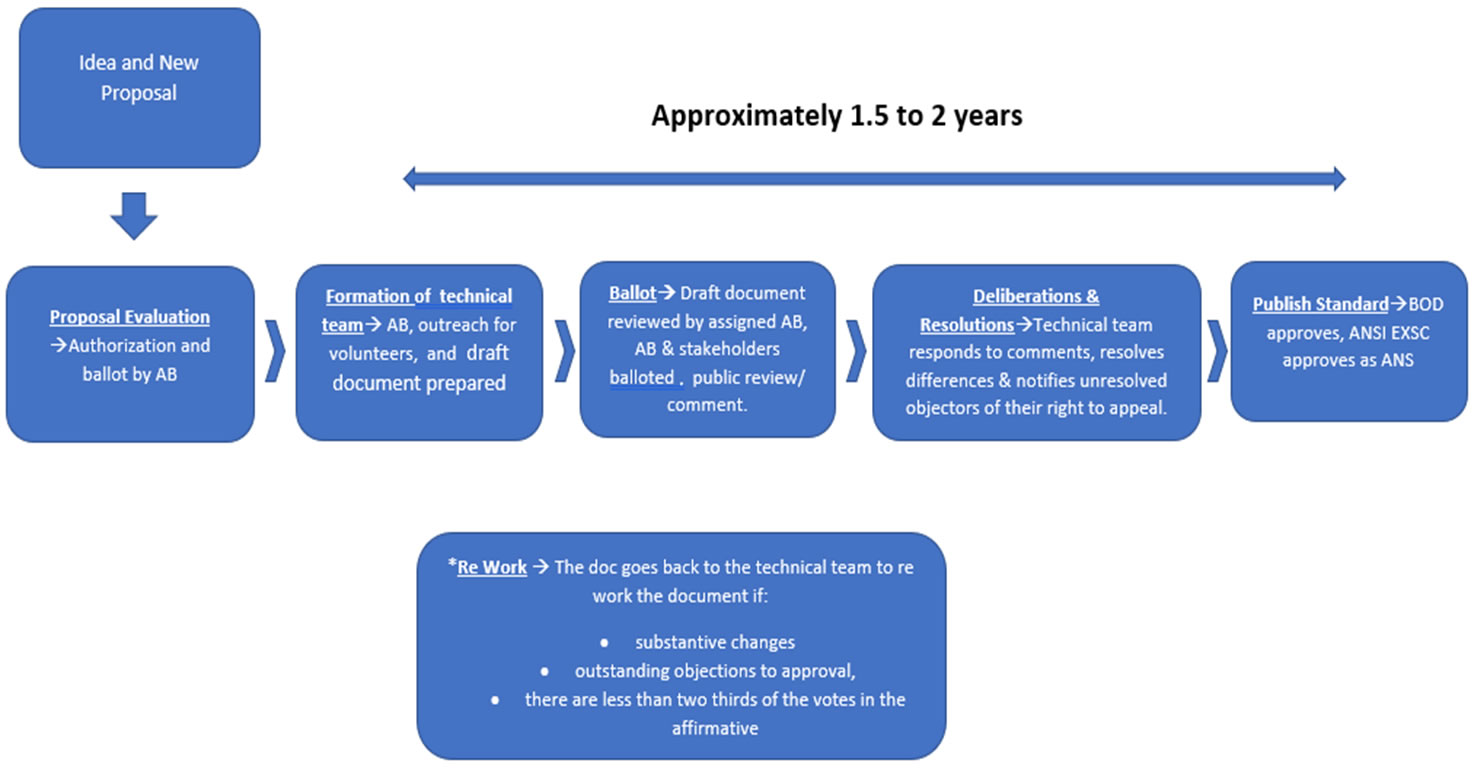FAQ
PDA Standards - Frequently Asked Questions
Becoming an accredited Standards Developing/Development Organization (SDO) means that the process and steps performed by the PDA meet the guidelines set forth by the American National Standards Institute (ANSI) in the ANSI Essential Requirements: Due Process Requirements for American National Standards (https://www.ansi.org/essentialrequirements). The key elements include openness, consensus vote, due process, lack of dominance, balance, public review/consideration of views and objections, an appeals process, and compliance with the ANS policies and administrative procedures.
A Voluntary Consensus Standard (VCS)is a standard developed in a specifically defined open and fair environment with general agreement by stakeholders (see OMB A-119)
An American National Standard (ANS) is a voluntary consensus standard developed in accordance with the American National Standards Institutes (ANSI) Essential Requirements and is subject to ANSI’s unique: (a) accreditation of applicable procedures; (b) neutral oversight; (c) document approval process; (d) appeals process; and (e) audit.
ANSI stands for American Nation Standards Institute. ANSI facilitates the development of American National Standards (ANS) by accrediting the procedures of standards developing organizations (SDOs). Founded in 1918, ANSI is a private, non-profit organization (5013c). ANSI coordinates standards, conformity assessment, and related activities in the U.S, and they are the official U.S. representative to the International Organization for Standardization (ISO).
The PDA is currently viewed as a leader in the industry; PDA Technical Reports are often used as a point of reference for regulatory compliance and inspections; ANSI accreditation provides access to other member benefits - ISO TAG Administration, U.S. Technical Advisory Group (TAG) for ISO standards activities for example; and becoming a standards developer adds value to the PDA brand name.
Ideas/New proposal can come from anyone and anywhere, and may include PDA technical reports for standard development. PDA proposed standards must be able to fall within the Five Topic Areas of PDA - Aseptic Processing & Sterilization, Biopharmaceuticals & Biotechnology, Manufacturing Science, Quality & Regulatory, and/or Supply Chain & Outsourcing.
In a nutshell, it is an agreed upon way of doing something, and in the case of PDA consensus standards, it includes the support of scientific evidence.
Approval of a PDA standard as an American National Standard (ANS) means that the standard meets ANSI’s Essential Requirements and the Federal government’s definition of a Voluntary Consensus Standard per OMB A119, and the World Trade Organization (WTO) Technical Barriers to Trade (TBT) Code of Good Practice (CGP) criteria for openness, transparency, impartiality and consensus, relevance and effectiveness.
The standard could be about product specifications, meeting specific requirements, like how a test should be performed, specific limits for accepting or rejecting results, emphasis on accuracy and reproducibility, managing a process, delivering a service, or supplying materials—PDA standards can cover a broad range of scientific activities. The point is to provide a reliable basis for people to share the same expectations about a product or service. PDA Standards are Intended to be Scientifically Derived Technical Standards. Examples Include:
- Material quality standards – this may describe tests, specifications, or data conversion on specified materials.
- Universal Process & procedure standards – This may be an agreed upon processes in the industry or agreed upon way of doing something.
- Format or Referencing standard – This could be an agreed upon list of definitions, nomenclature, or data formats to facilitate global harmonization in scientific language.
- Measurement/ Metrology standards - Supports harmonization in equipment use, statistical calculations, and formulas.
While most people may not think about them very much, standards make everyday life work. They establish size or shape or capacity of a product, process, or system. They can specify performance of products or personnel. They can also define terms so that there is no misunderstanding among those using the standard. For example, standards help ensure that a light bulb fits a socket, that you can take money out of any ATM in the world, and that plugs for electrical appliances fit outlets. In the U.S. alone, there are more than 100,000 standards at work across industry sectors.
Businesses not only reduce the economic risk of their research and development activities by participating in standardization, but also, they can lower their overall R&D costs by relying on previously standardized technologies and terminologies.
By participating in standards development activities that affect your products and services – and by implementing standards and conformance tools that can help you streamline your processes and trim costs – your company can continue to build market share and boost your bottom line.
Standards impact quality, lead time, factory flexibility, and supply chain management. They lead to lower costs by reducing redundancy, minimizing errors, and reducing time to market. Standards also make cross-border interoperability possible, ensuring that products manufactured in one country can be sold and used in another.

